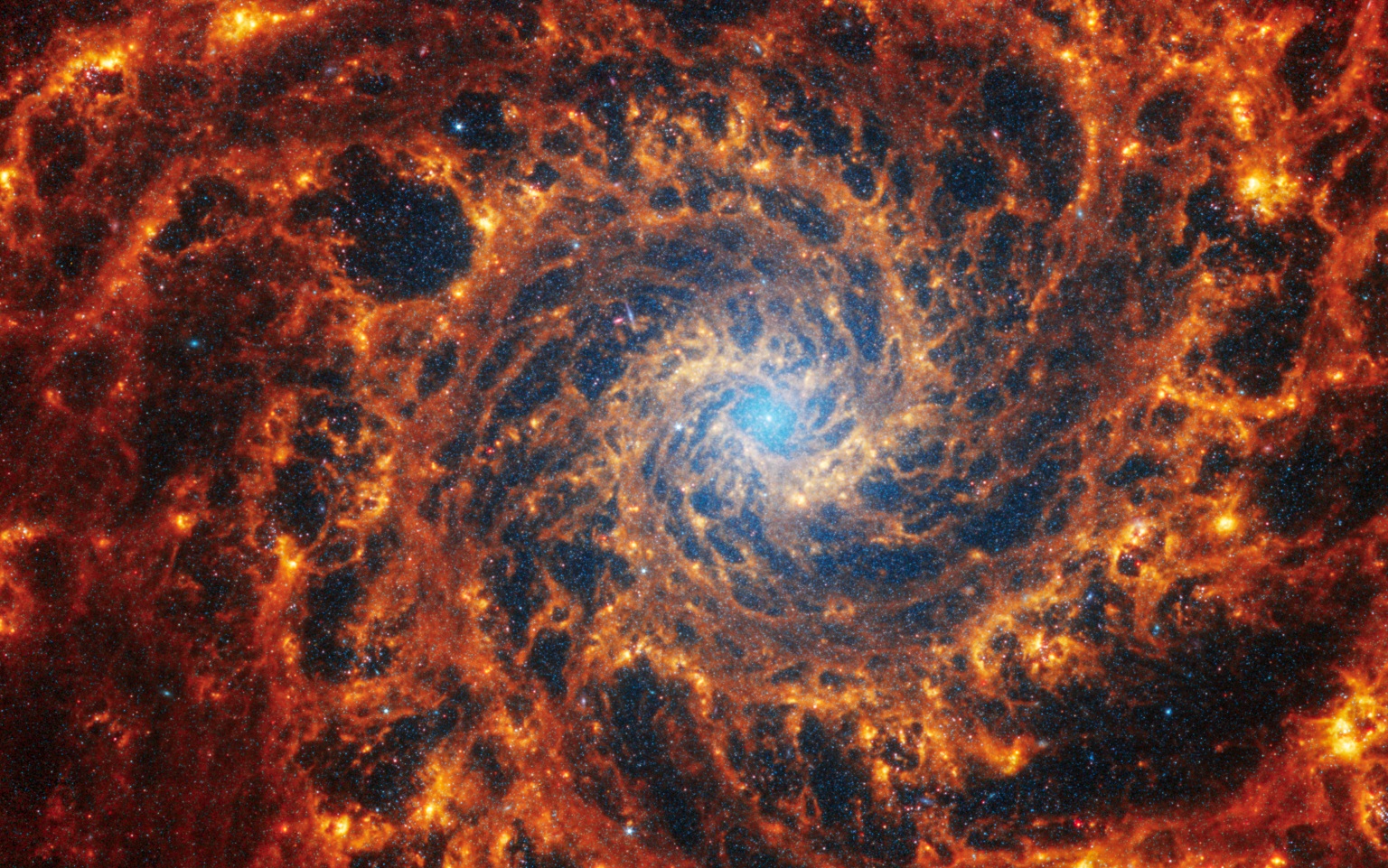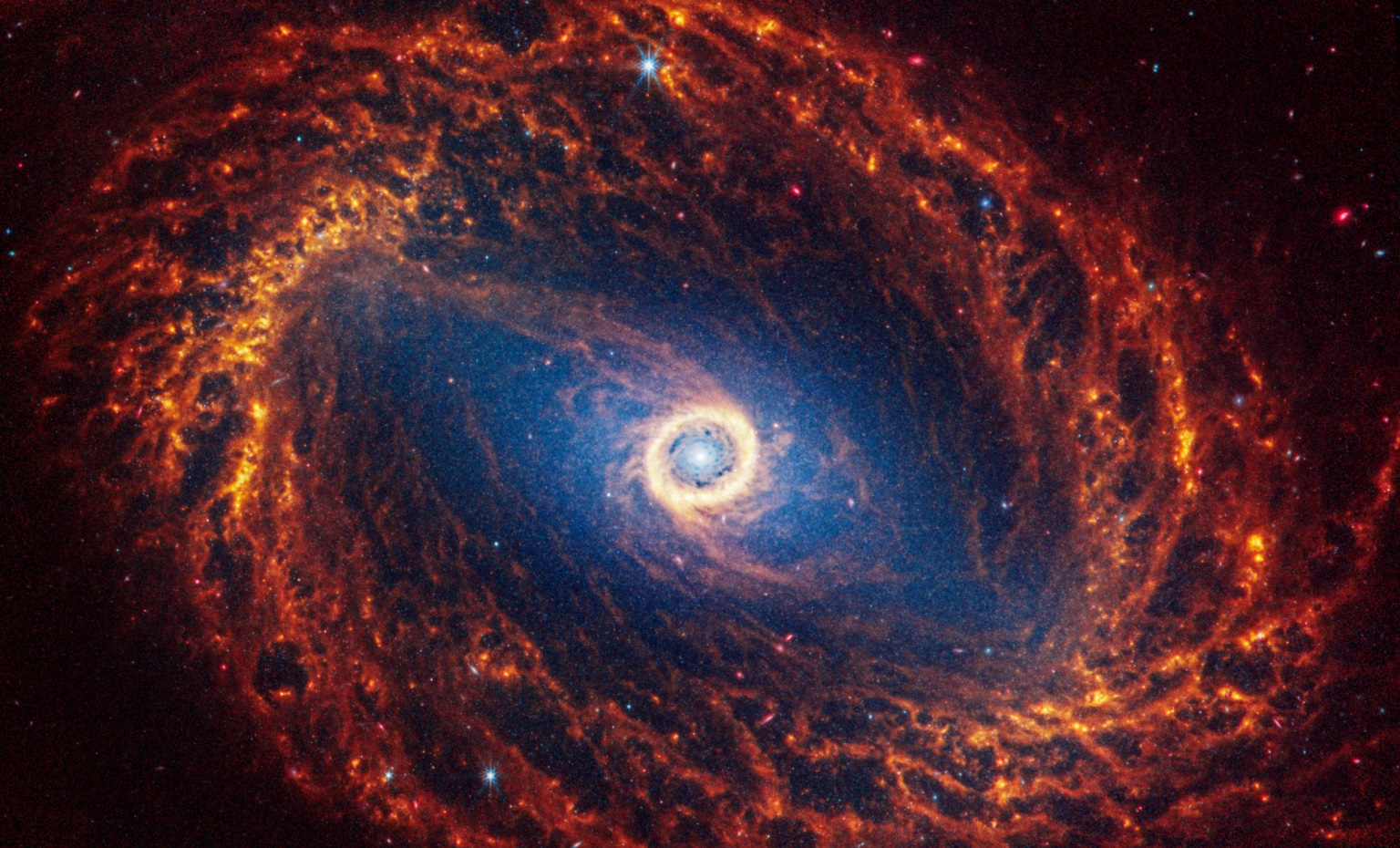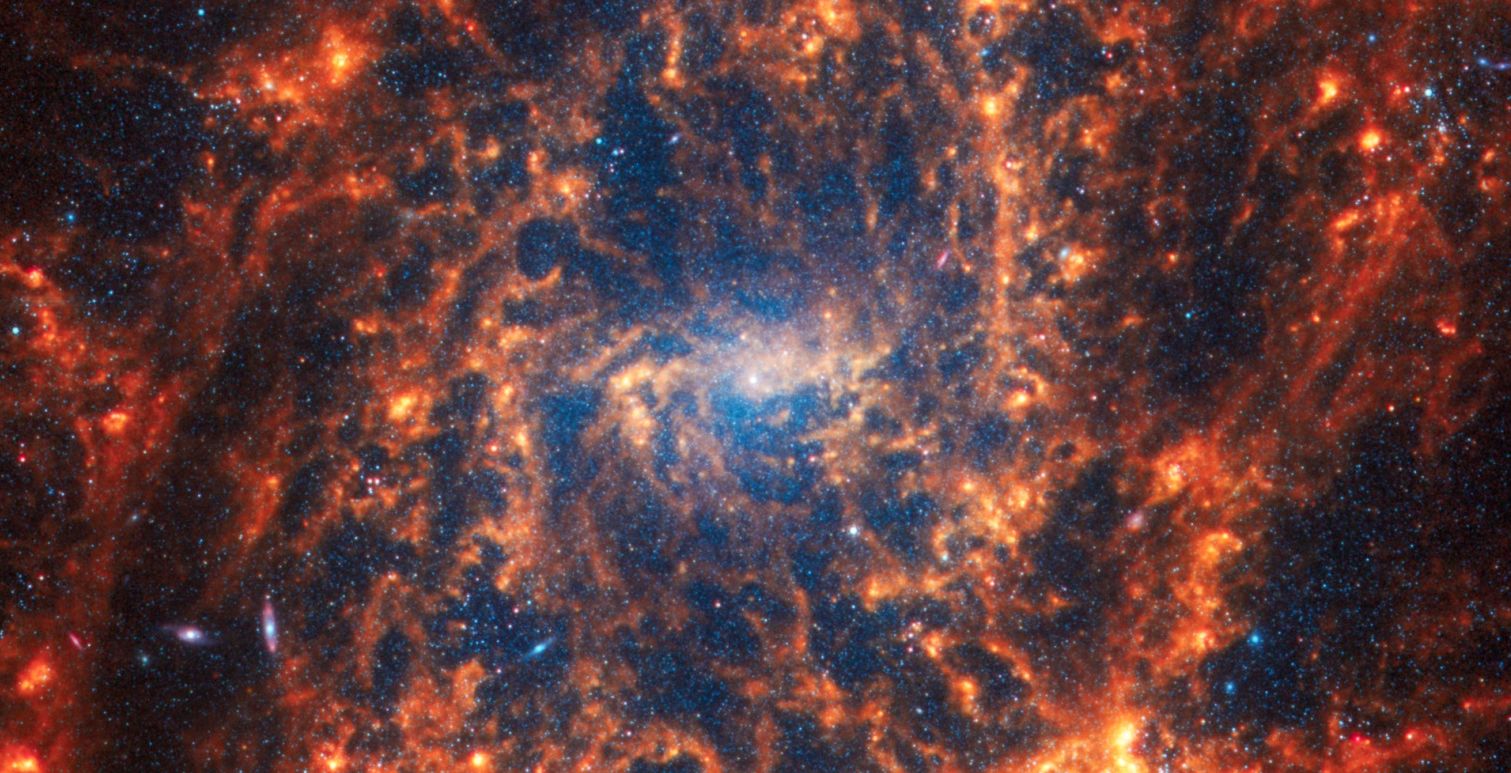
A series of newly released images taken by the James Webb Space Telescope show impressive detail of 19 spiral galaxies relatively close to the Milky Way, providing new information about the process of star formation and the structure and evolution of galaxies, Reuters reports, citing Agerpres.
The image was released by a group of scientists involved in the Physics at High Angular resolution in Nearby GalaxieS (PHANGS) project, which operates at several major astronomical observatories.

Photo: NASA James Webb Telescope
The closest of the 19 galaxies is called NGC5068 and is located about 15 million light-years from Earth, and the most distant of them is NGC1365, located about 60 million light-years from Earth.
A light year is the distance that light travels in one year – 9.5 trillion kilometers.
The James Webb Space Telescope (JWST) was launched in December 2021 and began collecting data in the summer of 2022, changing our understanding of the early universe with stunning images taken from space. The orbiting space observatory analyzes the universe mainly in the infrared range. The Hubble Space Telescope, launched in 1990 and still operating, studies it mainly in optical and ultraviolet radiation.

Photo: NASA James Webb Telescope
Spiral galaxies, similar to huge wheels, are often found in space. The Milky Way we are in is one of them.
The new observations were recorded by near-infrared (NIRCam) and mid-infrared (MIRI) cameras. They show about 100,000 star clusters and millions or possibly billions of individual stars.
“These data are important because they give us a new look at the early phase of star formation,” said University of Oxford astronomer Thomas Williams, who led the team responsible for processing the images.

Photo: NASA James Webb Telescope
“Stars are born deep within dust clouds that completely block light in the visible wavelengths that the Hubble Space Telescope is sensitive to, but these clouds ‘open up’ at JWST wavelengths. “We don’t know much about this phase, even how long it lasts, so this data will be vital to understanding how stars in galaxies begin their lives,” Williams added.
About half of spiral galaxies have a straight structure called a bar that extends from the galactic center to which the spiral arms are attached.
“Galaxies are generally thought to form from the inside out and thus grow larger during their lifetimes. The spiral arms take away the star-forming gas, and the bars direct that same gas toward the galaxy’s central black hole,” Williams said.

Photo: NASA James Webb Telescope
These images allowed scientists to reveal for the first time in extraordinary detail the structure of the clouds of dust and gas that form stars and planets in the galaxies beyond the Large Magellanic Cloud and the Small Magellanic Cloud, two galaxies that are considered galactic satellites. expansion of the Milky Way.
“The images are not only aesthetically stunning, but also tell the story of star formation and the feedback, energy and momentum released by young stars into interstellar space,” said Janice Lee, an astronomer at the Baltimore Space Telescope Science Institute. principal researcher of new data.

Photo: NASA James Webb Telescope
“There appears to have been explosive activity and absorption of dust and gas, both at the cluster scale and at the kiloparsec scale (about 3,000 light years). The dynamic process of the overall star formation cycle becomes qualitatively evident and accessible even to the public, making the images compelling in many ways,” Lee added.
Observations made by the James Webb Telescope are based on observations made by Hubble.
“Using Hubble, we would have seen starlight from galaxies, but some of the light was blocked by galactic dust,” said astronomer Eric Rosolowski of the University of Alberta. “This limitation has made it difficult to understand some aspects of how the galaxy works as a system. With Webb, we can peer through this dust to observe the stars behind and within the dust that envelops them,” he added.
Source: Hot News
Ben is a respected technology journalist and author, known for his in-depth coverage of the latest developments and trends in the field. He works as a writer at 247 news reel, where he is a leading voice in the industry, known for his ability to explain complex technical concepts in an accessible way. He is a go-to source for those looking to stay informed about the latest developments in the world of technology.